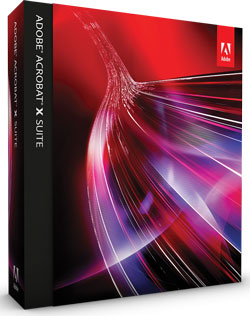BYO Upgrades: How to Set Your Priorities

Photo of MacBook Air courtesy of Apple Corp.
The beginning of the year is a great time for lawyers to set technology priorities and make purchases. An increasingly popular trend in business is known as the “bring your own computer” approach: Let employees use the technology they want and provide support accordingly.
Imagine your firm plans to adopt a BYOC program and gives you a budget of, say, $3,000 to add to or upgrade your technology in any way you want. And assume that everything you want to buy will actually work in your firm’s environment. How would you spend that in 2012?
I’ve chosen $3,000 because it’s large enough that you should be able to buy a top-of-the-line notebook (like the MacBook Air) with enough left over to spend on several other things, but small enough that you still have to make choices. The exercise will help you see where you want your priorities to be and compare them to where your technology and priorities are. Your tech plan for 2012 can then focus on closing this gap.
WISH LIST
Here are some suggestions:
1. Personal tech training. Many lawyers complain about not knowing enough about technology. Lawyers are also notorious for not showing up for training sessions in firms. Consider buying 3-5 hours of personal technology training focused on the programs you use daily (varies, but use $50 an hour as an estimate). Alternatively, a subscription to the online video training site Lynda.com ($250/year) will let you target specific deficiencies and try new features.
2. Practice-specific software. Depending on your practice area(s), there are likely to be practice-specific software programs (forms, workflow and the like) that can improve the economics of your practice. Case management programs or services also can be a big help. A fiduciary accounting program for a probate practice might cost around $500.
3. New interfaces. Lawyers who use two or more monitors swear by it. You can compare or work on two documents at once, put your email on a second screen and much more. A large monitor eases eyestrain. I saw a deal for two 24” monitors (with free shipping) for about $400. Replace old keyboards and mice as well.
4. Upgrade to current versions. Many lawyers run old versions of software, sometimes even two or three versions behind the current one. Updating the programs you use every day can be an eye-opener. Combining upgrades with training can be a game-changer.

Photo of Acrobat X Suite courtesy of Adobe.
5. Adobe Acrobat X. Acrobat is a versatile and helpful program. The latest version has organization, redacting, collaboration and other features that many lawyers might not be aware of. The cost is about $500 for the professional version. Another option is to buy the universally praised Fujitsu ScanSnap scanner that comes with a standard version of Acrobat (also around $500).
6. Backup and storage. You can find 2-terabyte USB hard drives for less than $100. Online backup services also are inexpensive ($50/year). And for a big performance improvement, look into a solid-state hard drive.
7. iPad. You know you want one. It’s a powerful tool that lets you see what the post-PC world might look like, and the tablet’s form factor makes sense for lawyers.
You might want to spend the bulk of your budget on the fancy new laptop of your dreams or the new program you’ve wanted, or a new smartphone if mobility is important for your practice.
Most of us will find a gap between what we are spending money on and what we think we want to spend on. Closing that gap is a great technology goal for 2012.

Photo of iPad 2 with smart cover courtesy of Apple Corp.
Dennis Kennedy is a St. Louis-based legal technology writer and information technology lawyer.



